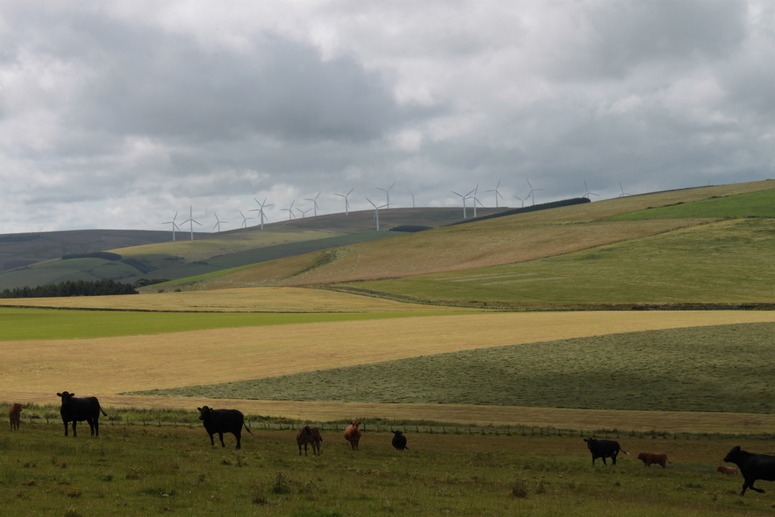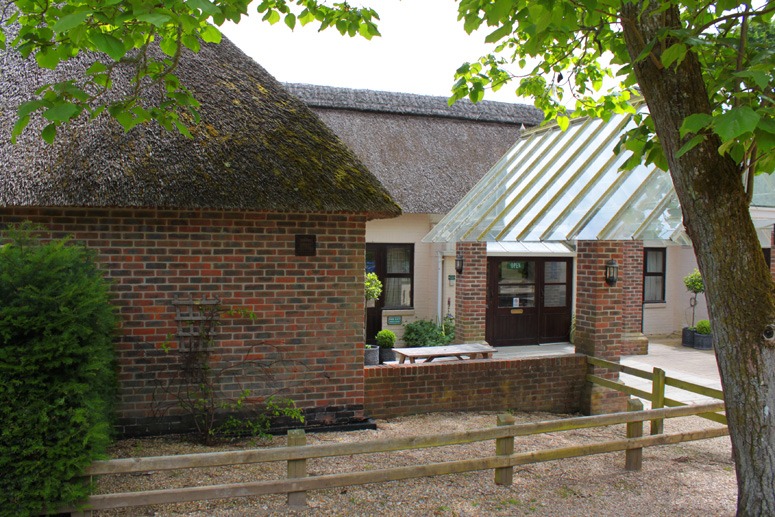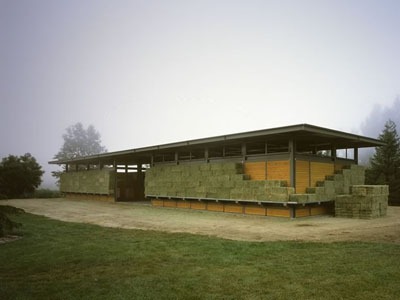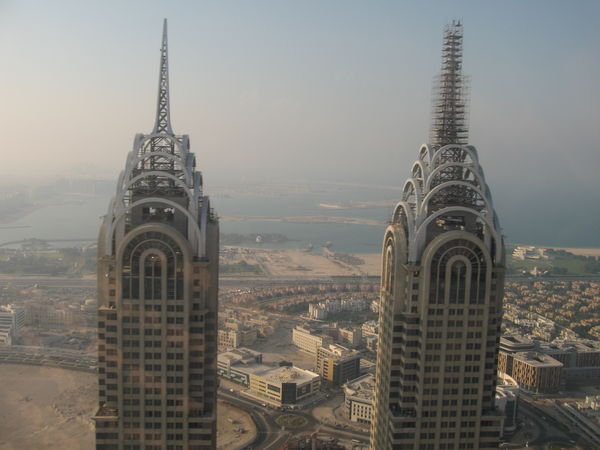Working on a second edition of Garden History Philosophy and Design 2000 BC to 2000 AD, I used MS Word’s compare and merge tool to relate the text I sent to the publisher with the text as-published. Some of the changes are sensible but I am cross with myself for not taking a strong line with the copy editor on many points. She seems not to have been too bothered about my spelling mistakes and, with a notable fondness for hackneyed platitudes, to have concentrated instead on the removal of colourful prose, strong opinions and anything remotely salacious. Grrr! Two of the great things about electronic publishing are (1) you are free of copy editors (2) you can have as many illustrations as you want, and they can all be in colour.
Monthly Archives: August 2009
Glass and thatched roofs at Athelhampton
Here is a really good example of context-sensitive design: the glass roof sits beautifully with the thatched roof. It looks as though the pitch is the same and I can’t even be sure whether the piers which support the glass are old or new. But some of the other details are less than perfect – the trip rail, though suitably rustic, seems unnecessary and the outdoor lantern is not in keeping with the arts and crafts excellence of the Athelhampton garden or indeed with what is described as one of the finest 15th century houses in England.
Vegetated architecture
Somis Hay Barn by Studio Pali Fekete Architects in California is a great example of low tech vegetated architecture of unsurpassed elegance and poetic beauty;
The peeling away of the hale bales creates temporal change and constant evolution: “At the end of the fall when it is stacked, the hay is freshly cut and green in color. Over the following months and after the hay has dried and adopted a yellowish color, it is removed and used to feed the cattle.”
According to Architecture Week the architects drew on the philosophy of wabi-sabi – “the Japanese concept of beauty in imperfection.”
The barn’s steel structure is unchanging and modern while the cladding is traditional and constantly changing according to the seasons and use.
Source: http://landscapeandurbanism.blogspot.com/2008_04_01_archive.html also http://www.spfa.com/main.html and http://www.architectureweek.com/2005/0223/news_1-2.html
Windpower and sustainable landscape planning

Are the wind turbines a welcome addition to the landscape scenery? Do they make a useful contribution to sustainable energy policy? No and No. They are more like space invaders - and this example is mere tokenism.
I know of one excellent publication on the physics of sustainable energy David MacKay’s Sustainable energy without hot air (though his website suggests he lacks expertise in graphic design!). He calculates that ‘If we covered the windiest 10% of the country with windmills (delivering 2 W/m2), we would be able to generate 20 kWh/day per person, which is half of the power used by driving an average fossil-fuel car 50 km per day.’ Current energy consumption is about 125 kWh/day and MacKay calculates that, because of wind-speed variation, if the entire UK was covered with wind turbines it would be possible to generate 200KWh/day. I do not think we should do this. The sensible steps towards more-sustainable energy use are (1) plan cities for cycle commuting (2) insulate buildings properly (3) tax bottled mineral water as heavily as alcoholic drinks.
But how can air conditioning costs be reduced in hot countries? Ideas welcome! Here are some suggestions (1) We used to have a refrigerator which was operated by dripping water onto a porous outer casing. The latent heat of evaporation cooled the inside. Could this work for buildings? (2) In West Asia windcatchers (Persian: بادگیر Bâdgir, Arabic: بارجيل Baarjiil) have long been used for sustainable air conditioning. This is now the part of world with the best supplies of oil, but the technology could be exported (3) apply even higher insulation standards than in cold countries, to keep the heat out (4) use heat pumps to refrigerate buildings – and generate electricity from the waste heat (5) use vegetation to shield the building from direct solar radiation
Eroticism in garden art and design
This chaste and charming engraving does not do justice to what is widely regarded as the most beautiful and the most erotic poem in world literature: the Song of Songs (or Song of Solomon) from the Old Testament of the Bible. Its beauty comes from the genius of the poet, who might have been King Solomon. Its eroticism comes from treating the garden as a locale for sex and a metaphor for the female genitalia. Exploration of these themes has delighted generations of scholars and produced a vast literature. Here, in the King James version, is the section of most interest to gardeners:
12 A garden inclosed is my sister, my spouse;
a spring shut up, a fountain sealed.
13 Thy plants are an orchard of pomegranates, with pleasant fruits;
camphire, with spikenard,
14 spikenard and saffron;
calamus and cinnamon,
with all trees of frankincense;
myrrh and aloes,
with all the chief spices:
15 a fountain of gardens,
a well of living waters,
and streams from Lebanon.
16 Awake, O north wind;
and come, thou south;
blow upon my garden,
that the spices thereof may flow out.
Let my beloved come into his garden,
and eat his pleasant fruits.
The influence of these famous lines on garden design has been profound. In Europe this came about through the Roman de la Rose and its influence on the design of enclosed gardens. The Song of Songs is also likely to have influenced the Qu’ranic account of the delights awaiting the faithful in paradise, which are far from chaste.
Seeing double in Dubai
Source: http://www.travelblog.org/Photos/1726246.html
New York continues to inspire with reports that an investment company in Abu Dhabi is looking for a 75% stake in one of the cities most iconic buildings the Chrysler Building. http://www.therealestatebloggers.com/2008/06/12/chrysler-building-for-sale-to-abu-dhabi-investment-company/ While in Dubai the impression is of seeing double…..
When Japan finally opened up to foreigners in 1854 after being “impenetrable to the western world” the fascination with Japanese gardens immediately made itself felt within English high culture and by the beginning of the twentieth century Japanese garden styles were still setting trends for popular gardens as well as inspiring a reconsideration of the early Japanoiserie gardens as cultural heritage in Britian. http://www.humanflowerproject.com/index.php/weblog/comments/1681/




